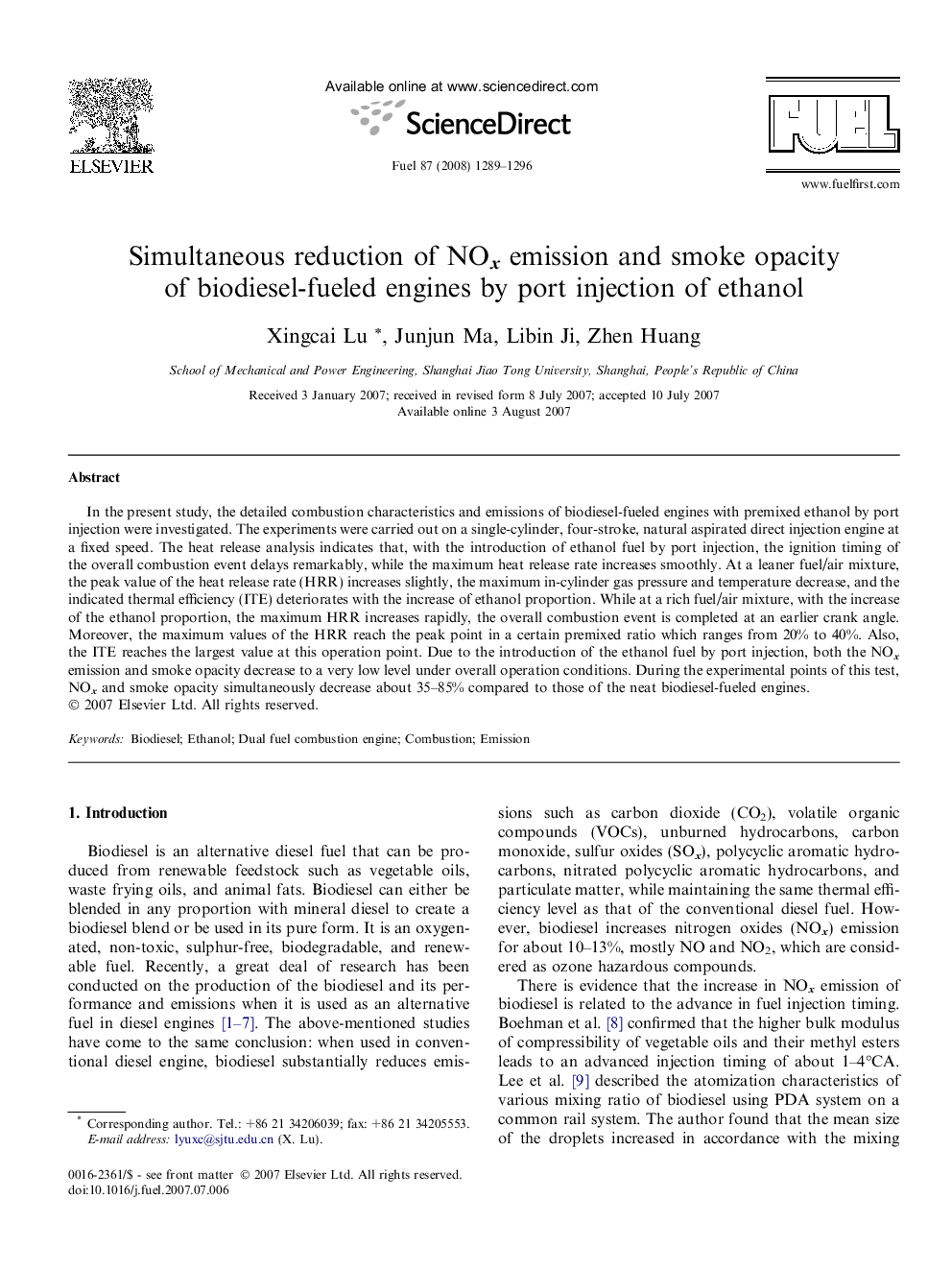| Article ID | Journal | Published Year | Pages | File Type |
|---|---|---|---|---|
| 208031 | Fuel | 2008 | 8 Pages |
In the present study, the detailed combustion characteristics and emissions of biodiesel-fueled engines with premixed ethanol by port injection were investigated. The experiments were carried out on a single-cylinder, four-stroke, natural aspirated direct injection engine at a fixed speed. The heat release analysis indicates that, with the introduction of ethanol fuel by port injection, the ignition timing of the overall combustion event delays remarkably, while the maximum heat release rate increases smoothly. At a leaner fuel/air mixture, the peak value of the heat release rate (HRR) increases slightly, the maximum in-cylinder gas pressure and temperature decrease, and the indicated thermal efficiency (ITE) deteriorates with the increase of ethanol proportion. While at a rich fuel/air mixture, with the increase of the ethanol proportion, the maximum HRR increases rapidly, the overall combustion event is completed at an earlier crank angle. Moreover, the maximum values of the HRR reach the peak point in a certain premixed ratio which ranges from 20% to 40%. Also, the ITE reaches the largest value at this operation point. Due to the introduction of the ethanol fuel by port injection, both the NOx emission and smoke opacity decrease to a very low level under overall operation conditions. During the experimental points of this test, NOx and smoke opacity simultaneously decrease about 35–85% compared to those of the neat biodiesel-fueled engines.
